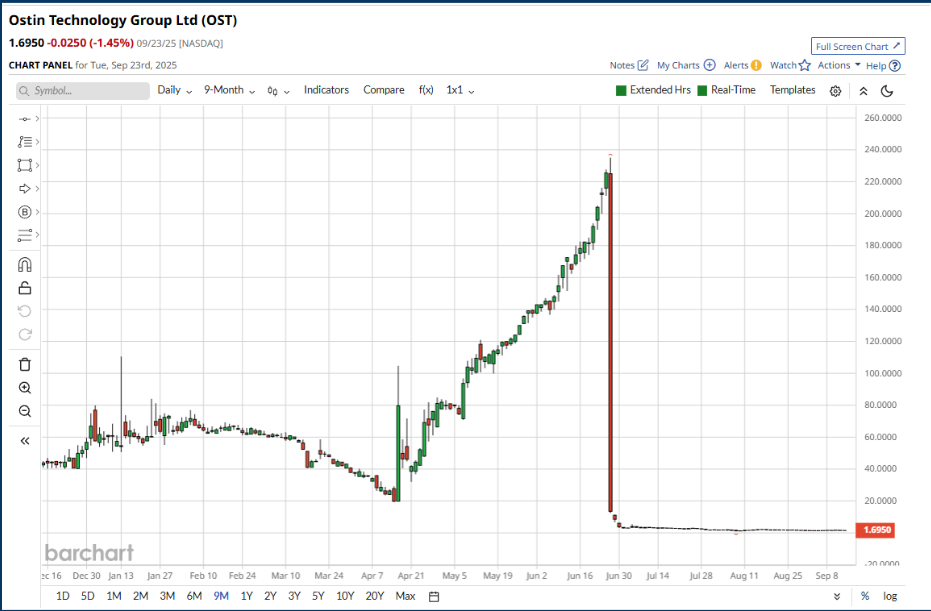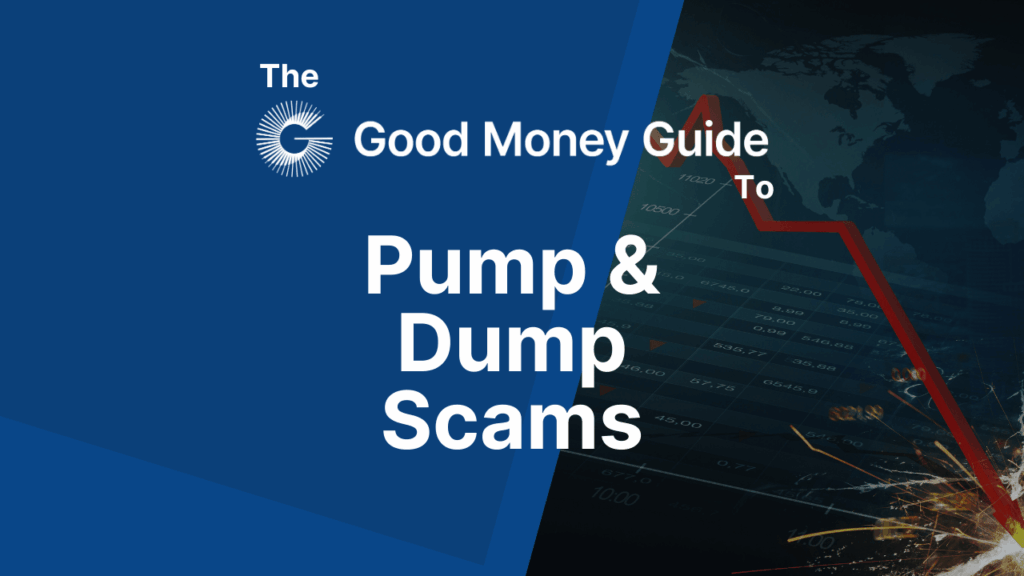Stock trading scams, otherwise known as “Pump and Dump” operations, are nothing new and have dogged investors since stock markets were first formed.
Shady operators take advantage of greed and FOMO, to manipulate stock prices and investor sentiment, for their own ends.
These schemes first came to prominence in the 1920s during a period of lax regulation.
For example, when RCA stock was pushed up more than fivefold to $500.00 per share, before collapsing to less than $10.00 during the 1929 crash.
The RCA stock price was driven higher by the use of a so-called trading pool, members of which traded blocks of stock, between themselves, to drive up the share price and inflate trading volumes.
The organisers of a Pump and Dump scheme aim to sell, or dump their stock holdings, towards the top end of the share price range, leaving other unsuspecting investors in the dark.
Without the manipulation, the underlying share price collapses, because not only are there no new buyers for the stock, on rising prices, there are usually no buyers at all on the way down, to allow sellers to exit.
Gone but not forgotten
These types of scams were revived through the operations of what were known as “boiler rooms” in the late 1980s and early 1990s, but tighter regulation and a number of high-profile criminal prosecutions curbed their appeal.
However, Pump and Dump is back and is particularly prevalent among Chinese stocks with Nasdaq listings.
70% of the stocks involved in reports, about stock price manipulation, to FINRA (the Financial Industry Regulatory Authority) and the SEC, since 2022 have involved Chinese securities.
A statistic that industry experts believe is a sure sign that these are part of a coordinated effort to deceive/defraud investors.
During the summer, The Good Money Guide was asked, by a reader, about one such company, OstinTechnology Group. A manufacturer of displays for electronic devices, according to the company’s bio.
The price chart below tells its own story. And both phases of the scheme are clearly visible within it.
- The “Pump” took place between April and late June.
- The Dump happened immediately after that.
- The stock touched a high of $235.00 per share before crashing back to earth, to trade at just $1.6950.

Source Barchart.com
Nor was this an isolated event; half a dozen other Nasdaq-listed Chinese Stocks appear to have been manipulated by scammers, including Park Ha Biological Technology, Everbright Digital and Jayud Global Logistics.
How do pump-and-dump scammers operate?
The scammers in Nasdaq-listed Chinese stocks use a highly coordinated strategy that leverages modern technology, such as chat groups, messaging platforms and social media, targeted at retail investors.
The scammers acquire a significant holding in target companies, typically a microcap or penny stock, which have a low market cap and about which there is little or no information.
In the next phase, the scammers target individual retail investors through a combination of ads and posts on platforms such as Facebook and WhatsApp, promising large returns and an easy way to make money.
Potential investors are encouraged to move into a private chat, if they want to find out more.
The scammers use AI bots to impersonate other investors and advisors ,in these private chats, to give the impression of investor interest and demand, and to spread false information and make exaggerated claims, in order to stoke the Fear Of Missing Out (FOMO) among retail investors in the private chat.
Once the retail investors are hooked the scammers encourage them to take large positions in the smallcap Chinese stocks, through the retail traders existing brokerage.
If this is done at scale, then the price of the underlying shares will rise rapidly, which can encourage more investors to take the plunge, but also of course provides an opportunity for the scammers to exit their positions, for a considerable profit.
Longer-term scamming
The scammers may not exit all at once, however, and may play a longer game hoping to suck in more retail traders.
For example, if we look back at the trading history of Ostin Technology, then April 15th stands out with the stock price jumping by +299.0% and volume in the name rising from just 5000 shares the previous day to more than 4.30 million shares.
That infers that the scammers found some sizable retail buyers and took advantage, in order to sell stock to them, as the price rocketed.
At some point though, the music stops, as the scammers exit their positions completely and cease their promotional activities.
Leaving the retail investors who still hold the stock high and dry, holding what amounts to worthless stock, likely at a significant loss, with little prospect of getting that money back.
It’s estimated that investors have lost as much as $4.0 billion to these scams since November 2024.
What are the regulators doing to stop these stock manipulation scams?
For its part ,Nasdaq is tightening up its regulations to make it harder for small Chinese stocks to list in the US, and to raise the bar for those that already have a listing.
Whilst the Department of Justice has announced criminal charges against two directors of Ostin Technology, it has also formed a special investigative team and seized $214.0 million in scammed proceeds.
How can you spot a stock manipulation scheme and stay safe?
The best advice is that if something sounds too good to be true then it probably is.
Always vet your sources of information, particularly those on social media and those that offer huge returns from speculative microcap stocks, and in particular foreign stocks listed in the US.
The scammers aren’t going to go away and they are likely to make increasing use of AI in future so look out for oddly worded phrases and sentences in communications around investing.
And wherever possible, only interact with regulated and reputable sources and channels.
Don’t join unsolicited private chat groups, and remember that trading and investing are not get-rich-quick schemes, but rather long-term journeys, in which there are few if any genuine shortcuts to success.

With over 35 years of finance experience, Darren is a highly respected and knowledgeable industry expert. With an extensive career covering trading, sales, analytics and research, he has a vast knowledge covering every aspect of the financial markets.
During his career, Darren has acted for and advised major hedge funds and investment banks such as GLG, Thames River, Ruby Capital and CQS, Dresdner Kleinwort and HSBC.
In addition to the financial analysis and commentary he provides as an editor at GoodMoneyGuide.com, his work has been featured in publications including Fool.co.uk.
As well as extensive experience of writing financial commentary, he previously worked as a Market Research & Client Relationships Manager at Admiral Markets UK Ltd, before providing expert insights as a market analyst at Pepperstone.
Darren is an expert in areas like currency, CFDs, equities and derivatives and has authored over 260 guides on GoodMoneyGuide.com.
He has an aptitude for explaining trading concepts in a way that newcomers can understand, such as this guide to day trading Forex at Pepperstone.com
Darren has done interviews and analysis for companies like Queso, including an interview on technical trading levels.
A well known authority in the industry, he has provided interviews on Bloomberg (UK), CNBC (UK) Reuters (UK), Tiptv (UK), BNN (Canada) and Asharq Bloomberg Arabia.
To contact Darren, please ask a question in our financial discussion forum.




